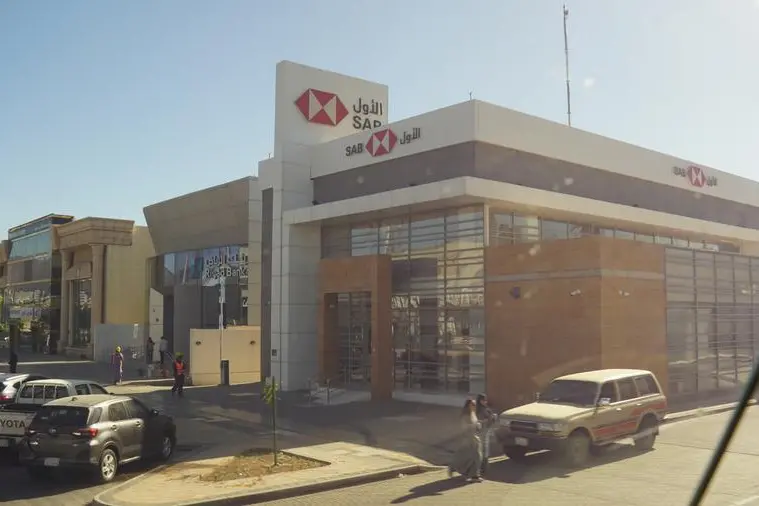John Baer, Senior Director of Product Management at Moody's Analytics discusses how new banking regulations will drive the need to use superior analytics and data management practices to make better loan origination decisions
With the adoption of new bank regulations such as Basel III on the horizon, commercial banks in the Middle East will be bracing for higher regulatory capital and liquidity requirements, and increased demand from regulators and stakeholders for increased transparency across their risk systems.
Heads of risk and technology departments need to ensure their risk data management systems can support fact-based decisions reflecting their firm's overall portfolio and corporate risk strategy.
John Baer is a Senior Director of Product Management at Moody's Analytics where he is responsible for the Origination and Credit Assessment product line. He tells Banker Middle East that banks which are growing organically or through acquisition cannot afford underwriting inefficiencies or ineffective loan decisions.
How are regulatory reforms such as Basel III causing changes in the financial services industry in the Middle East?
With the wide adoption of Basel II and its Internal Ratings Based (IRB) approach in the Middle East over the past 10 years, early adopter financial institutions in the region have established competitive advantages through improved risk management practices. From an origination risk IRB standpoint, the principles of Basel II remain a foundation for the Basel III regulations. To competitively differentiate going forward, financial institutions should not only continue to focus on managing credit risk effectively but also increase their focus on profitability at the loan and customer level, often measured by Risk Adjusted Return on Capital (RAROC).
Firms should recognise the business value that comes from superior analytics and improved data management capabilities within a straight-through processing loan origination system. This involves more than providing granular data, but also having complete, clean counterparty and transaction-level data to calculate regulatory and economic capital. Increased precision in these calculations will help firms identify and evaluate opportunities to improve profitability across different lines of business.
Based on your experience working with global financial institutions, what changes are you seeing in technology needs?
Over the past decade, investment in modern commercial loan systems has been largely deferred. To stay competitive in the new world of increased regulation, a bank's commercial underwriting processes must be more efficient. Banks are rethinking the way they manage counterparty risk data and how to make more informed origination decisions, based on risk appetite and risk-adjusted performance metrics.
To address these challenges, commercial banks will be implementing modern loan origination and credit administration systems with robust risk analytic capabilities. Firms can create operational efficiencies and reduce underwriting costs by standardising business processes using a workflow-driven, straight-through processing platform that includes a risk data mart. This type of system allows banks to enforce consistent risk management policies and consolidate data for reporting purposes at the same time.
With increased banking regulation, regulators will continue to demand more granular financial and non-financial data. As such, banks of all sizes are looking to streamline their systems and adopt a single risk data mart to bring increased transparency and efficiency to their processes. With one central source of risk data, banks will gain a consistent view of risk across departments and reduce unnecessary, redundant systems.
To be sure, banks in the Middle East face a different set of issues and challenges with respect to their central bank and regulatory guidelines. For instance, banks in the GCC region face different regulatory priorities than banks in Lebanon and Jordan. Currently, the adoption of IRB is not a significant regulatory mandate in places like Lebanon and Jordan, especially compared to Saudi Arabia and other GCC countries. Of course, the bank regulator in Lebanon is encouraging Lebanese banks to adopt internal credit risk rating systems - but more for 'good banking' reasons as opposed to mandated regulatory compliance.
How are Tier 1 banks different from Tier 2 and Tier 3 banks with respect to needs?
Generally, Tier 1 banks - or at least banks with greater resources - are the first to adopt workflows to drive efficiencies, risk-adjusted pricing, single risk data marts and to focus on deploying capital more efficiently. Some mid-sized banks are just leaving the starting gate. It's hard to get to these solutions without first starting with ratings - which the Tier 1 banks have already addressed. Banks wanting to achieve IRB know it will take two to three years for them to reach that status if they start now, and they know the deciding factor for this is ratings capability. RAROC is a key step, but the basis for this is strong ratings capabilities and for many banks that is the starting point.
To bring the most value to an IT investment, what should banks look for in a commercial loan origination system?
Leading financial institutions focus on their customers and the risk-based performance of doing business with those customers. There are many loan origination vendors, but very few offer a comprehensive, risk-based platform that includes cutting edge analytics to support decision-making. Most platforms promise better operational efficiencies, but the real power of a modern loan origination system comes from coupling workflow efficiency tools with risk analytics directly embedded into origination workflows.
By leveraging risk scoring and risk-based pricing analytics - whether you're lending to public or private firms - more effective, informed, and profitable lending decisions are made. During the next three years, institutions will absolutely be using more and more analytics to make data-centric lending decisions.
Having a standardised commercial loan platform with workflows that include advanced analytics can help banks operationally integrate portfolios from acquired or merged financial institutions. Given the current competitive environment for commercial loans, banks that are growing organically or through acquisition cannot afford underwriting inefficiencies or ineffective loan decisions.
Aside from a regulatory compliance standpoint, what is the business benefit of having better analytics?
The real benefit comes from deploying capital more efficiently, increasing return on equity (ROE), Shareholder Value Added (SVA) and Economic Value Added (EVA). Many firms are concerned that higher regulatory capital requirements will lead to lower returns. We believe, if done right, high returns can still be achieved within your current risk strategy. This is where real-time risk-based pricing capabilities that reflect your overall portfolio come into play.
By having portfolio-driven price recommendations and other analytics embedded within the origination process, your organisation has a system in place for measuring and analysing RAROC - and will have a process in place to allocate capital more effectively. By understanding transaction risk and the impact of each new loan on your portfolio, you can make more informed pricing decisions.
It's all about how the transaction looks in the context of your portfolio and having that information at the point of origination, not a month or a quarter later - after the deal has been done. You may very well be underweight in a particular sector and be able to price a loan more aggressively than a competitor to win the business. Risk-based pricing also helps you understand the incremental value the originating transaction brings to your portfolio.
Do improved analytics and a straight-through loan origination system lead to better client relationships?
Absolutely. One long-time origination customer in the Middle East told us that one of their biggest differentiators is their turn-around time. Borrowers in their region refer to them as the 'quick decision-making bank.' Borrowers benefit when banks know up front what paperwork is required to underwrite a specific type of loan and relationship managers do not have to continually go back to the borrower for more documentation.
It is beneficial to have all client documents stored in one location, electronically within the workflow tool.It also helps when relationship managers perform pre-deal limit checks for potential breaches. The pre-deal check determines the appropriate level and set of approvals required to efficiently advance the underwriting process, minimising application-to-approval cycle time. This will undoubtedly lead to stronger client relationships, more high-quality deals and better ROE and SVA for the bank. Finally, banks can use analytics and workflow automation to streamline the loan origination process so high quality borrowers can be fast-tracked, reducing opportunity costs.
John Baer is a Senior Director of Product Management at Moody's Analytics where he is responsible for the Origination and Credit Assessment product line.
© Banker Middle East 2011




















